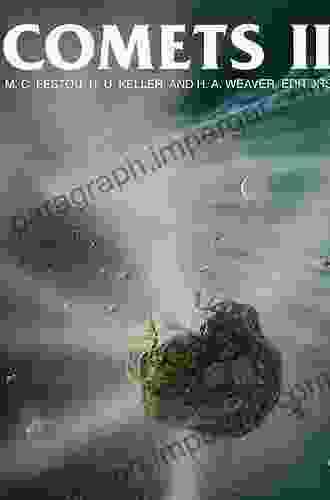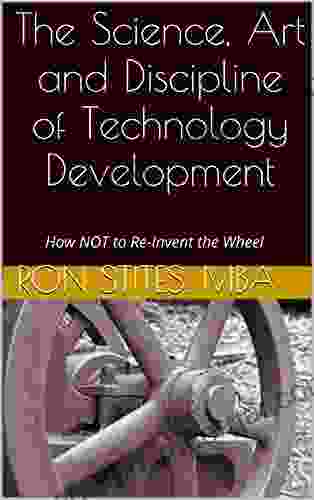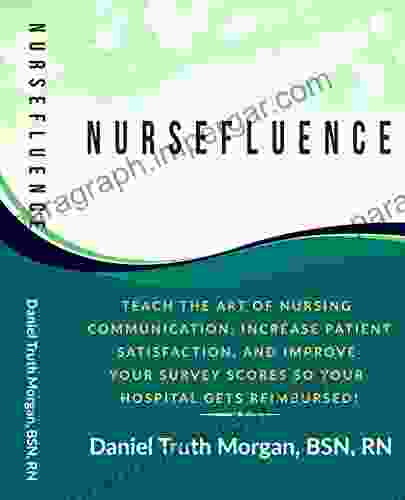The Science, Art, and Discipline of Technology Development

In today's rapidly evolving technological landscape, the ability to develop and deploy new technologies effectively has become paramount. Whether it's creating cutting-edge medical devices, designing innovative software solutions, or transforming industries with groundbreaking advancements, the success of technology development projects relies on a delicate balance of science, art, and discipline.
In this comprehensive guide, we will delve into the multifaceted world of technology development, exploring the scientific principles, creative approaches, and rigorous methodologies that underpin successful outcomes. Whether you are a seasoned innovator, an aspiring engineer, or simply someone fascinated by the process of bringing new technologies to life, this article will provide you with invaluable insights and practical guidance.
5 out of 5
| Language | : | English |
| File size | : | 645 KB |
| Text-to-Speech | : | Enabled |
| Screen Reader | : | Supported |
| Enhanced typesetting | : | Enabled |
| Print length | : | 98 pages |
| Lending | : | Enabled |
Chapter 1: The Scientific Foundation of Technology Development
At its core, technology development is a scientific endeavor. It involves applying scientific knowledge and methods to solve complex technological challenges. This chapter will explore the fundamental scientific principles that underpin technology development, including:
- Problem Definition: The art of precisely defining the problem to be solved, ensuring that the technology development effort is focused and directed towards a specific goal.
- Scientific Inquiry: The process of gathering and analyzing data, conducting experiments, and formulating hypotheses to gain a deep understanding of the problem and potential solutions.
- Technology Selection: The systematic evaluation and selection of the most appropriate technologies and techniques to address the identified problem, considering factors such as feasibility, cost, and performance.
Chapter 2: The Art of Innovation in Technology Development
While science provides the foundation, technology development also requires a healthy dose of creativity and innovation. This chapter will delve into the artistic side of technology development, exploring techniques for:
- Ideation: Generating and exploring a wide range of potential solutions, fostering a culture of open-mindedness and experimentation.
- Prototyping: Creating physical or digital representations of potential solutions to test their functionality and gather feedback, allowing for iterative refinement and improvement.
- Design Thinking: Applying human-centered design principles to ensure that the developed technology meets the needs and desires of its intended users.
Chapter 3: The Discipline of Technology Development
In addition to scientific principles and creative approaches, technology development requires a rigorous and disciplined approach. This chapter will emphasize the importance of:
- Project Management: Establishing clear goals, timelines, and responsibilities, and managing resources effectively to ensure timely and successful completion.
- Quality Assurance: Implementing rigorous testing and validation procedures to ensure that the developed technology meets the desired specifications and performance criteria.
- Continuous Improvement: Establishing processes for ongoing evaluation, feedback, and refinement to enhance the effectiveness and efficiency of the technology development process.
Chapter 4: Case Studies in Successful Technology Development
To illustrate the practical application of the principles and methodologies discussed in this guide, this chapter will present case studies of successful technology development projects across various industries. These case studies will showcase:
- Innovative Solutions: Examples of groundbreaking technologies that have transformed industries and improved lives.
- Best Practices: Analysis of the key factors and approaches that contributed to the success of these projects.
- Lessons Learned: Insights into common challenges and pitfalls, and how they were overcome to achieve successful outcomes.
Chapter 5: The Future of Technology Development
As technology continues to evolve at an unprecedented pace, it is essential to consider the future of technology development. This chapter will explore emerging trends and advancements, such as:
- Artificial Intelligence: The impact of AI on technology development, from automating tasks to enabling new capabilities.
- Quantum Computing: The potential of quantum computing to accelerate scientific discovery and enable the development of transformative technologies.
- Convergence of Technologies: The increasing interconnectedness of different technologies and the emergence of interdisciplinary approaches.
The science, art, and discipline of technology development are intertwined and essential for creating innovative and impactful technologies that drive progress and shape the future. By embracing the scientific principles, fostering creativity and innovation, and adhering to rigorous methodologies, we can unlock the full potential of technology to improve lives, solve complex problems, and build a better world. This comprehensive guide has provided a detailed roadmap for understanding and navigating the complexities of technology development. Whether you are a seasoned professional or a novice seeking to enter this exciting field, the insights and guidance contained within will empower you to make meaningful contributions to the advancement of technology.
5 out of 5
| Language | : | English |
| File size | : | 645 KB |
| Text-to-Speech | : | Enabled |
| Screen Reader | : | Supported |
| Enhanced typesetting | : | Enabled |
| Print length | : | 98 pages |
| Lending | : | Enabled |
Do you want to contribute by writing guest posts on this blog?
Please contact us and send us a resume of previous articles that you have written.
 Book
Book Novel
Novel Page
Page Chapter
Chapter Text
Text Story
Story Genre
Genre Reader
Reader Library
Library Paperback
Paperback E-book
E-book Magazine
Magazine Newspaper
Newspaper Paragraph
Paragraph Sentence
Sentence Bookmark
Bookmark Shelf
Shelf Glossary
Glossary Bibliography
Bibliography Foreword
Foreword Preface
Preface Synopsis
Synopsis Annotation
Annotation Footnote
Footnote Manuscript
Manuscript Scroll
Scroll Codex
Codex Tome
Tome Bestseller
Bestseller Classics
Classics Library card
Library card Narrative
Narrative Biography
Biography Autobiography
Autobiography Memoir
Memoir Reference
Reference Encyclopedia
Encyclopedia Joel Salatin
Joel Salatin Jerome Kagan
Jerome Kagan Jennifer Ford Berry
Jennifer Ford Berry Jessica Redland
Jessica Redland Jill Potvin Schoff
Jill Potvin Schoff Johan Giesecke
Johan Giesecke Jill Norgren
Jill Norgren Jim Josefson
Jim Josefson John B Imboden
John B Imboden Jim Newheiser
Jim Newheiser Jim Richards
Jim Richards Jes Baker
Jes Baker Jim Makowicki
Jim Makowicki Jennifer Jane Marshall
Jennifer Jane Marshall Jimmy Mcdonough
Jimmy Mcdonough Jennifer George
Jennifer George John Andreas Olsen
John Andreas Olsen Jeff Perring
Jeff Perring Jessica Alexander
Jessica Alexander Jehu Hanciles
Jehu Hanciles
Light bulbAdvertise smarter! Our strategic ad space ensures maximum exposure. Reserve your spot today!

 José SaramagoWoman's Guide to Liberation From Anxiety, Worry, and Stress Using Mindfulness
José SaramagoWoman's Guide to Liberation From Anxiety, Worry, and Stress Using Mindfulness
 Clinton ReedDelve into the Captivating World of Comets with the Comprehensive "Comets II"...
Clinton ReedDelve into the Captivating World of Comets with the Comprehensive "Comets II"... Deacon BellFollow ·9.8k
Deacon BellFollow ·9.8k Hassan CoxFollow ·3.5k
Hassan CoxFollow ·3.5k W. Somerset MaughamFollow ·7.8k
W. Somerset MaughamFollow ·7.8k Jayden CoxFollow ·7k
Jayden CoxFollow ·7k Rex HayesFollow ·11.3k
Rex HayesFollow ·11.3k Leo TolstoyFollow ·19.1k
Leo TolstoyFollow ·19.1k Adrien BlairFollow ·10.1k
Adrien BlairFollow ·10.1k Vince HayesFollow ·12.9k
Vince HayesFollow ·12.9k

 Christian Barnes
Christian BarnesUnleash Your Creativity: Build Interlocking 3D Animal and...
Discover the Art of Paper...

 Terry Bell
Terry BellUnveiling the Secrets of Winning: A Comprehensive Guide...
In the realm of chance and fortune, the...

 Albert Camus
Albert Camus101 Things That You Should Do Before Leaving The House In...
Starting your day right is...

 Anthony Burgess
Anthony BurgessForcing Move 2024 Volume: Unleash Your Inner Grandmaster
Embark on an extraordinary chess...
5 out of 5
| Language | : | English |
| File size | : | 645 KB |
| Text-to-Speech | : | Enabled |
| Screen Reader | : | Supported |
| Enhanced typesetting | : | Enabled |
| Print length | : | 98 pages |
| Lending | : | Enabled |












